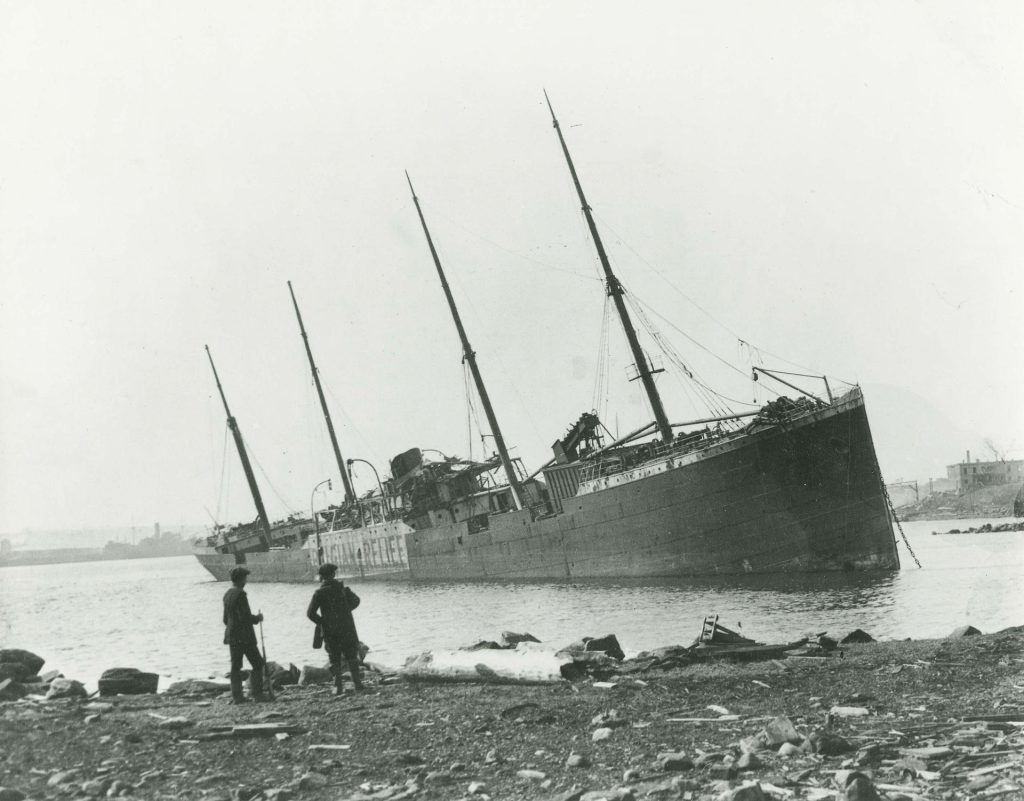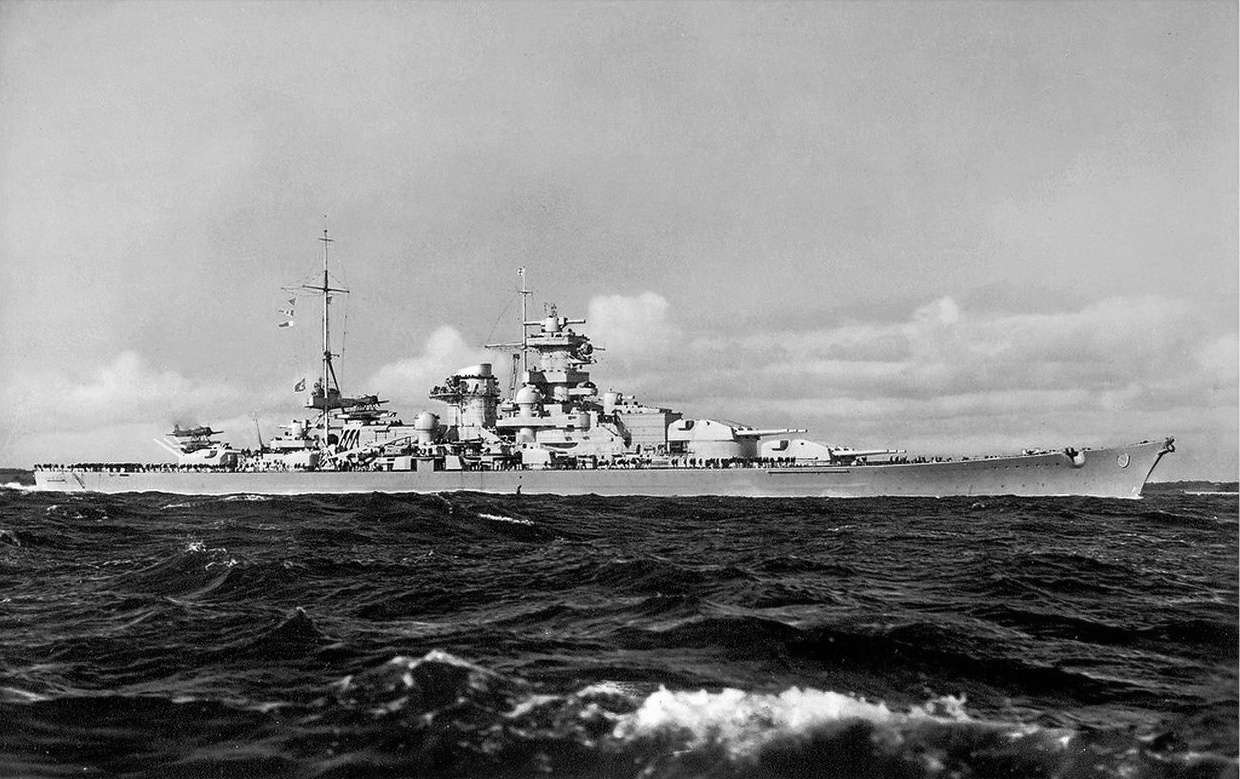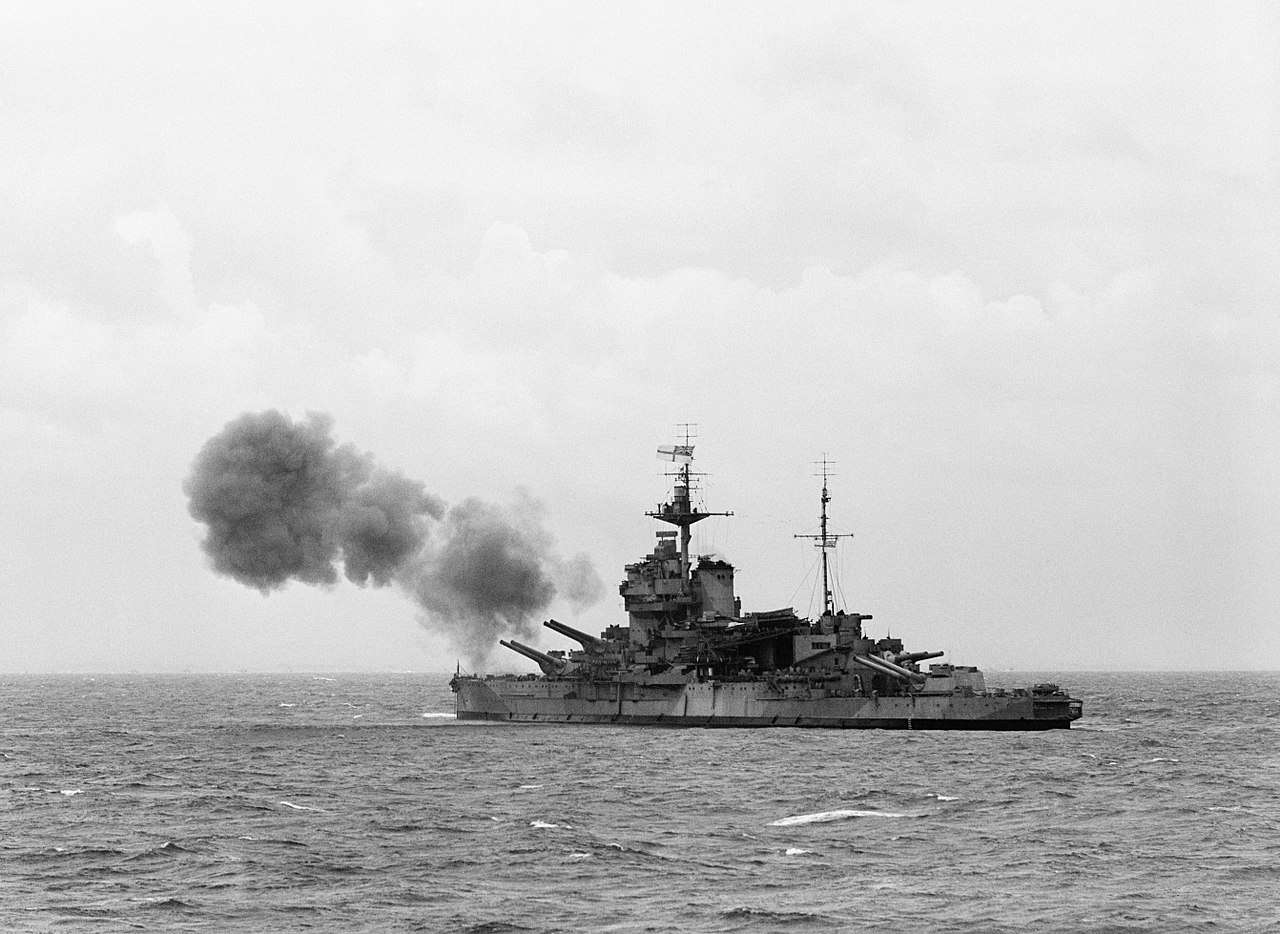On December 6, 1917, the city of Halifax, Nova Scotia, witnessed one of history’s most devastating maritime disasters: the Halifax Explosion.
This catastrophic event was triggered by a collision in the harbor between the SS Mont-Blanc, carrying a cargo of wartime explosives, and the SS Imo, leading to an explosion of unprecedented scale.
In fact, the explosion was the largest man-made explosion in history at the time and is regarded as one of the largest non-nuclear explosions in history.
Contents
Background
The background and causes of the Halifax Explosion are rooted in the historical and maritime context of the early 20th century, particularly the circumstances of World War I.
Halifax, Nova Scotia, at this time, was a critical North Atlantic port, playing a vital role in the war effort as a hub for military ships and transatlantic convoys. The harbor was bustling with naval activity and was key for the transfer of troops, supplies, and munitions to the European front.
Read More The Tragic Sinking Of The SS Cap Arcona
World War I significantly increased maritime traffic in Halifax Harbor. The port’s strategic location made it a pivotal point for the Allied naval operations. The presence of naval mines in the North Atlantic further amplified the importance of Halifax as a relatively safe and accessible port. This increase in traffic also heightened the risks associated with the transportation of dangerous cargo, particularly munitions and explosives.
The SS Mont-Blanc, a French cargo ship, played a central role in the events leading to the explosion. It was tasked with transporting a highly volatile cargo, which included approximately 2,300 tons of picric acid, 200 tons of TNT, 35 tons of benzol, and 10 tons of guncotton.
These materials were intended for use in the war effort and were incredibly sensitive to impact and fire. The ship, having arrived from New York, was waiting to join a convoy across the Atlantic.
In contrast, the SS Imo, a Norwegian vessel, was chartered by the Commission for Relief in Belgium to transport relief supplies. On the morning of December 6, 1917, the Imo was leaving Halifax Harbor to join the war effort in Europe. Due to delays and a series of miscommunications, the Imo found itself on a collision course with the Mont-Blanc as it entered the harbor.
The ships collided in the narrowest part of Halifax Harbor, known as The Narrows. The collision was not particularly severe in terms of physical damage to either vessel. However, it proved catastrophic due to the nature of the Mont-Blanc’s cargo.
The Explosion
At approximately 9:04:35 AM, the fire on the SS Mont-Blanc ignited its cargo of explosives. The resulting blast was monumental in its power.
The explosion released energy equivalent to roughly 2.9 kilotons of TNT. The force of the explosion was so immense that it created a mushroom cloud rising over 3,600 meters into the air. The shockwave from the blast traveled at more than 1,000 meters per second, obliterating everything in its immediate vicinity.

The impact of the explosion was catastrophic for the city of Halifax. The area closest to the explosion, particularly the Richmond District, was completely annihilated. Buildings were either vaporized or reduced to rubble, and a significant portion of the city was destroyed or severely damaged. The explosion caused the immediate deaths of hundreds of people, with many more dying in the following hours and days from injuries and secondary causes.
The effects of the explosion extended well beyond the immediate vicinity. Windows were shattered up to 100 kilometers away, and the sound of the explosion was heard as far as Prince Edward Island, several hundred kilometers distant. The force of the explosion was so strong that a section of the Mont-Blanc’s anchor shaft, weighing over 500 kilograms, was found 4 kilometers away from the blast site.
Read More Germany Built A Weather Station In Canada During WWII
A lesser-known but equally devastating effect of the explosion was the resulting tsunami. The blast pushed water out of the harbor at an incredible force, creating a tsunami that washed over parts of the shore. The water surge reached a height of up to 18 meters, flooding parts of the city and causing further destruction.
In addition to the initial blast and the tsunami, the explosion triggered fires throughout Halifax. Many of the buildings that had survived the initial blast were wooden and highly flammable. The fires spread rapidly, fueled by the debris and compounded by broken gas lines.
The environmental impact of the explosion was significant. The blast stripped trees of their bark and branches and scorched the earth in a wide radius. The landscape of the harbor was irrevocably altered, with parts of the shoreline reshaped by the force of the explosion and the subsequent tsunami.
The Human Toll
The human toll and damage caused by the Halifax Explosion were profound and far-reaching. The disaster not only claimed a staggering number of lives but also left thousands injured and caused extensive property damage, fundamentally altering the city of Halifax and impacting its community deeply.
The most immediate and tragic impact of the Halifax Explosion was the immense loss of human life. Approximately 2,000 people were killed as a result of the explosion, making it one of the deadliest disasters in Canadian history.
The victims included men, women, and children of all ages and walks of life. The death toll was so high due to the densely populated nature of the area surrounding the harbor, especially the Richmond District, which bore the brunt of the explosion. Many victims were killed instantly by the blast, while others succumbed to their injuries in the hours and days that followed.

In addition to the fatalities, over 9,000 people were injured. The nature of these injuries varied widely, from burns and broken bones to shrapnel wounds and blindness caused by flying glass. The city’s medical facilities were quickly overwhelmed, with hospitals and makeshift aid stations struggling to cope with the sheer number of casualties. This situation was exacerbated by the fact that many medical professionals and first responders were among the casualties.
Read More U-864 – The U-Boat That Was Sunk With A Deadly Cargo
The explosion caused widespread destruction to property and infrastructure. In the Richmond District, entire blocks were leveled, leaving thousands homeless and destitute. Buildings, homes, schools, and churches were either completely destroyed or severely damaged. The city’s infrastructure suffered too, with roads, railways, and telegraph lines ruined, hampering initial relief efforts. The explosion also damaged the underwater communication cables, isolating Halifax from the rest of the world for a brief period.
The Aftermath Of The Halifax Explosion
Immediately after the explosion, local response efforts began, despite the shock and disarray. Survivors, including those who were injured, began rescue operations, pulling people from the rubble and offering makeshift aid.
The Halifax Police, fire departments, and military personnel stationed in the city were among the first responders. Despite their own losses and the chaos, they coordinated search and rescue efforts, tended to the injured, and maintained order amidst the devastation.
Read More The Bizarre Story Of The Navy Blimp L-8
The medical response was a critical aspect of the relief efforts. Hospitals in Halifax were quickly overwhelmed with the injured. Medical staff, including doctors and nurses, worked tirelessly, often without adequate supplies or rest.
Additional medical personnel were brought in from nearby cities and regions. Temporary hospitals and first aid stations were set up to manage the overflow of casualties. The lack of sufficient medical supplies initially hampered these efforts, but supplies began arriving within days of the disaster.

National and international aid played a significant role in the relief efforts. The Canadian government, along with other provinces, sent aid and resources. However, it was the response from the United States, particularly Boston, that marked a significant aspect of the international aid.
Boston quickly organized and dispatched a relief train loaded with medical personnel, supplies, and relief workers. This prompt and generous response was critical in the days immediately following the explosion.
Read More USS Barb – The Submarine That Destroyed a Train
The city of Boston’s response was not only immediate but also extensive. The relief train from Boston arrived in Halifax on the morning of December 8, bringing much-needed medical aid, food, clothing, and other supplies. Boston also sent experts to assist with relief efforts, including engineers, doctors, and disaster relief specialists. This aid was instrumental in stabilizing the situation and aiding in the early recovery process.
In the aftermath of the initial response, long-term support and rebuilding efforts began. This included not only the physical rebuilding of the city but also support for the thousands of people who had lost their homes and livelihoods. International aid, particularly from the United States, continued in various forms. The support from Boston led to a lasting bond between the two cities, commemorated by Halifax’s annual gift of a Christmas tree to Boston, a tradition that continues to this day.








